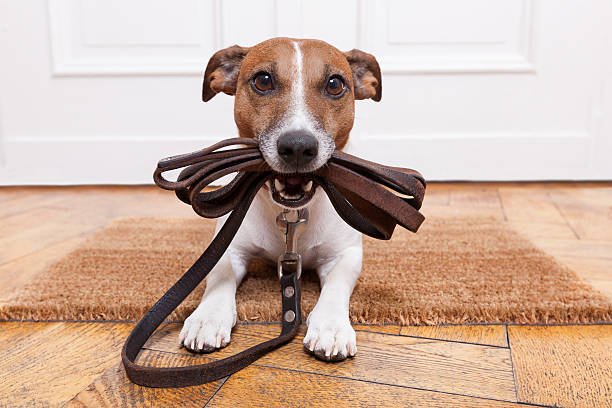As your puppy grows older, you will want to train it to walk with a leash, as walks are an essential part of helping the puppy grow to be strong and healthy. There are no immediately clear cut rules about leash training, and not all dogs will respond with the same training methods. However, there are a few basic principles that can always be carried over and modified from pet to pet. One of the most important things that you will need to have is patience. Much like training your dog to respond to any number of different commands, you must engage the puppy in a fun and safe way, where your pet can associate the leash with an enjoyable time.
To begin with the training exercises, the first thing that you will need is to get your dog a leash and a collar. While it sounds like it should be obvious, the truth is that different dogs will respond different types of leashes. Some dogs may prefer to walk with a harness, which can be recommended for smaller dogs in general, while other dogs may prefer to walk on expendable leashes that can allow them to explore their environment. Some dogs can be trained to walk without a leash as well, but this is a more complicated training procedure that can be learned after you are more comfortable with introducing your dog to an ordinary leash.
The first step in the training process is to put the leash on your dog and allow them to become accustomed to it. Having treats nearby can be a good way to help an unresponsive puppy get used to the leash, but it is important to never force your dog into the leash. First have the collar on them, and then attach the leash until they get used to wearing it. You can measure your progress by noticing how comfortable your dog is when it wears the leash. If you can see that he is going about the house as if the leash is not on its body, then you are ready to move on to the next stage. Hold the leash and do not try to get the dog to walk just yet. Allow the dog to get used to moving while you hold the leash, and try not to tug or force it in any direction. It is important for your dog to become confident when it wears the leash, and having a treat with you as you walk can help your dog get used to following you on command.
Sometimes, your dog may sit and not move. In this instance, walk a few steps away and encourage your dog to come towards you with a treat in your hand. Repeat this until your dog becomes used to walking with you. Patience and gentle care are both important to have when you train your dog, especially if you are trying to acclimate it to the leash from a young age. Puppies are especially encouraged by playtime and treats, and playing with your dog first can be a good way to get it used to the leash afterwards. With love and positive reinforcement, you will find that leash training your puppy can be an easy and enjoyable activity that will result in a well natured dog as it grows older.
